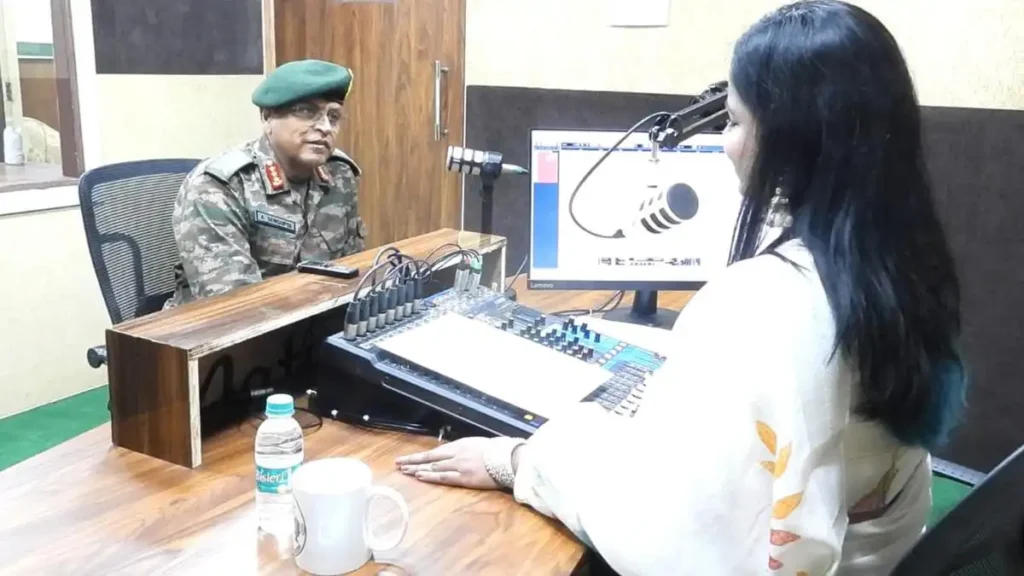Voice of Kinnaur Community Radio Launched in Himachal Border District to Empower Local Voices

‘Voice of Kinnaur’ Community Radio Launched in Himachal to Empower Border Villages
Kinnaur, Himachal Pradesh — In a significant step toward strengthening local communication and preserving cultural identity, the Himachal Pradesh government has launched the ‘Voice of Kinnaur’ community radio station in the remote border district of Kinnaur. This new initiative aims to bridge the information gap in the region’s remote villages and serve as a platform for local voices, especially in the areas that often remain isolated from mainstream media.
Kinnaur, one of the 12 districts of Himachal Pradesh, shares a sensitive international border with China and has often been at the receiving end of limited communication facilities due to its rugged terrain and sparse population. The introduction of a community radio station is expected to revolutionize how people in this Himalayan district stay informed, express themselves, and participate in public discourse.
Why Voice of Kinnaur Radio Is a Lifeline
The ‘Voice of Kinnaur’ radio station, which began airing recently, has already created a buzz among locals. The programming includes news bulletins, cultural programs, local folklore, educational content, and important government updates—broadcasted in regional dialects such as Kinnauri and Hindi. It aims to promote local culture, boost awareness on government schemes, and provide entertainment to the community.
Local school teachers, farmers, women’s self-help groups, and youth are being encouraged to participate and contribute content. This grassroots-level involvement ensures that the programming reflects the true voice of Kinnaur—one that resonates with the district’s rich traditions, ecological wisdom, and pressing contemporary issues.
Global Significance of Initiatives Like Voice of Kinnaur Radio
Community radio is not just a broadcasting tool—it’s a medium of empowerment. For a border district like Kinnaur, where digital connectivity is patchy and newspapers take days to arrive, the role of such a radio station becomes even more critical.
This initiative is also a proactive move in the larger national interest. Border villages often experience a disconnect from the rest of the country, making them vulnerable to misinformation and alienation. By offering authentic, locally-relevant content, ‘Voice of Kinnaur’ will ensure that communities stay connected, informed, and patriotic.
“Community radio plays a unique role in giving a voice to remote communities. It fosters inclusivity and cultural preservation. In a border area like Kinnaur, this becomes even more important,” said a senior official from the Department of Information and Public Relations, Himachal Pradesh.
Local Response and Early Impact
The response from the community has been overwhelmingly positive. Villagers who previously had limited access to news are now tuning in regularly. Schoolchildren are excited to hear educational programs in their mother tongue, and older adults enjoy storytelling sessions and local music broadcasts that remind them of their youth.
Rinzin Negi, a teacher from a remote school in Pooh, shared his thoughts:
“For the first time, our students are hearing educational lessons in our own dialect. It makes learning more engaging. We feel connected and represented.”
Local NGOs are also optimistic about the platform’s potential to raise awareness about critical issues such as climate change, health, women’s rights, and sustainable farming practices.
The Government’s Vision and Future Plans
The launch of ‘Voice of Kinnaur’ is part of a broader vision to expand community media across the Himalayan state. Himachal Pradesh is now exploring similar stations in other hard-to-reach districts such as Lahaul-Spiti and Chamba.
Chief Minister Sukhvinder Singh Sukhu, in his message during the inauguration, emphasized the importance of communication in inclusive development.
“The people of Kinnaur have a distinct identity, language, and heritage. This radio station is a tribute to their spirit. It will not only inform but inspire,” he said.
The government plans to fund training workshops for community volunteers, ensure better technical support, and explore partnerships with educational institutions and civil society groups to make content more diverse and impactful.
Challenges Ahead
Despite the enthusiasm, some challenges persist. The harsh weather and geographical isolation can affect the station’s infrastructure and power supply. Additionally, building a consistent team of trained volunteers and content creators from local communities is an ongoing process.
Experts believe that consistent government support, coupled with community ownership, will be essential for the station’s long-term sustainability.
Community Radio as a Global Movement
The success of ‘Voice of Kinnaur’ mirrors the global impact of community radio in fostering democratic dialogue and inclusiveness. Across countries like Nepal, South Africa, and Brazil, community radio has emerged as a powerful tool to amplify rural voices and spark social change.
Organizations like UNESCO have long advocated for community radio as a pillar of sustainable development and cultural preservation. The Himachal initiative is a step in the same direction, tailored to India’s diverse linguistic and cultural landscape.
Conclusion: A New Dawn for Kinnaur
As the soothing voices of ‘Voice of Kinnaur’ begin to echo through the valleys and mountains of Himachal Pradesh’s border district, they carry with them not just stories and songs, but the hopes of a community yearning to be heard. This initiative is more than just a broadcast—it’s a declaration that every voice matters, no matter how remote.
In a time when digital noise often drowns local truths, ‘Voice of Kinnaur’ reminds us of the power of simplicity, authenticity, and community-driven change.






